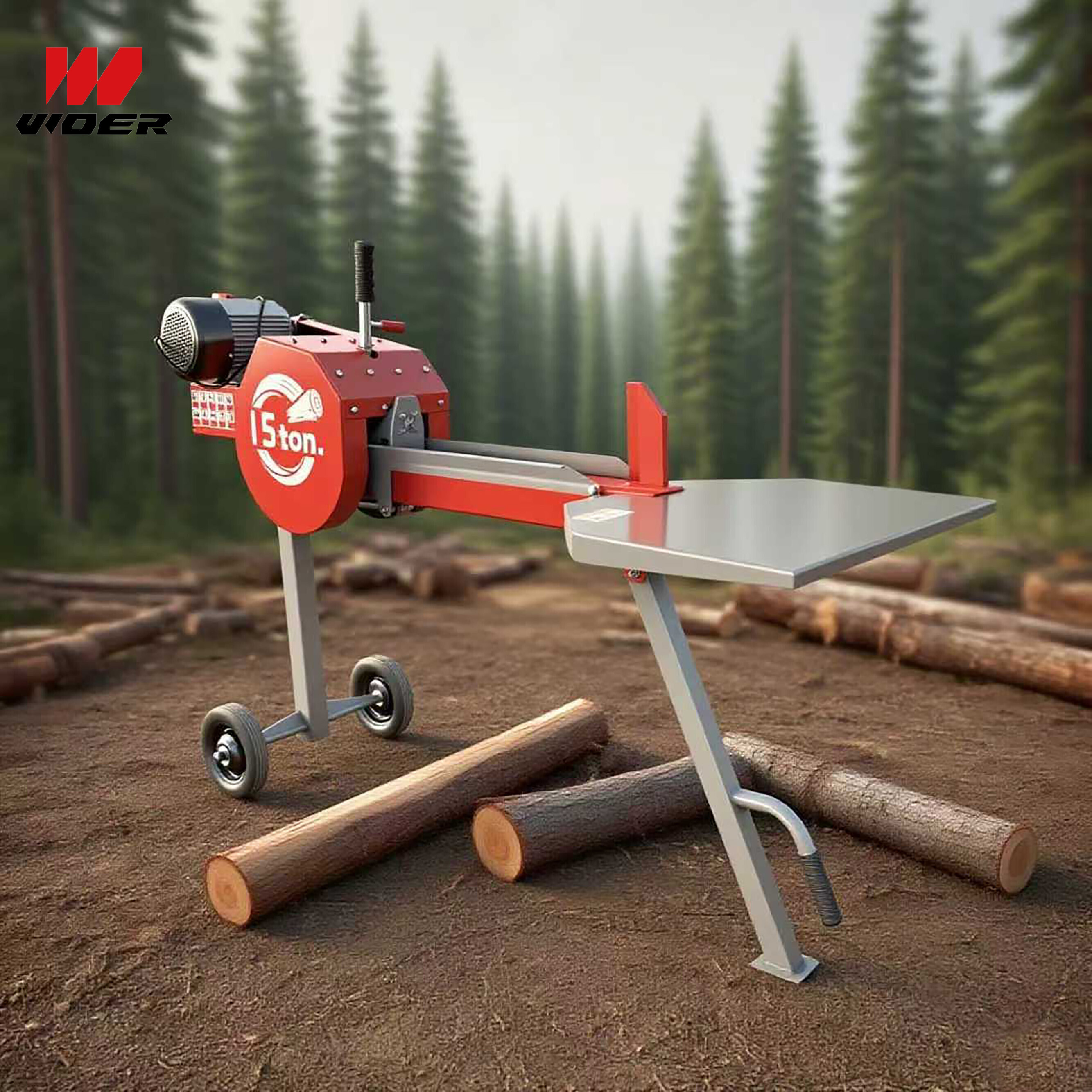Navigation
Contact us
Phone
Message

This article evaluates whether a kinetic log splitter can replace traditional wood log splitter options, comparing hydraulic, electric and gasoline systems to help technical, procurement and operational stakeholders make an informed choice.
Executive summary: is a kinetic log splitter right for you?
Kinetic log splitter technology changes the way impact energy is delivered: instead of slowly pressurizing hydraulic oil, it stores kinetic energy and releases it as a high-speed impulse. The result is much faster cycle times and different maintenance and power characteristics compared with a hydraulic log splitter or an electric log splitter. For anyone evaluating a log splitter for sale cheap, fleet replacement, or specialized applications, the decision hinges on throughput, fuel or power availability, required splitting force, and lifecycle costs.
How a kinetic log splitter works vs hydraulic and electric systems
Kinetic splitters convert engine or electric motor input into rotational energy in a flywheel. When triggered, the flywheel transfers momentum to a sliding ram via a mechanical coupling. Hydraulic log splitter systems, by contrast, use a pump and oil circuit to build and apply continuous pressure; hydraulic models are available in petrol-driven (log splitter gasoline) and electric varieties (log splitter electric). Electric log splitters and electric-powered hydraulic models are quieter and cleaner but often have lower sustained force than gasoline or heavy-duty hydraulic machines.
Key operational differences
- Cycle time: kinetic log splitter is typically the fastest (multiple cycles per minute), hydraulic is slower but offers steady force, electric hydraulic units are moderate.
- Peak vs continuous force: kinetic delivers high peak force for short duration; hydraulic delivers sustained force until log splits.
- Power source and portability: kinetic and gasoline hydraulic units are portable; electric log splitter options are quieter for indoor or low-emission sites.
Performance comparison table
Applications and industry use scenarios
Kinetic log splitters excel in operations where throughput is the priority: firewood processors, commercial yards, and rental fleets benefit from fast cycle rates. Hydraulic log splitters remain the standard for heavy, knotty timber and for users needing a predictable, steady application of force. Electric log splitter options suit residential property owners, small contractors, and indoor facilities where emissions or noise are constrained.
Cost, procurement and lifecycle considerations
When evaluating a purchase—whether a log splitter for sale cheap or a premium fleet purchase—consider total cost of ownership beyond initial price. Kinetic units often carry a higher initial cost but reduce labor and time per cord, which improves throughput ROI. Hydraulic systems may be cheaper upfront in some segments but incur recurrent hydraulic oil, filter and seal replacement costs. Electric models save fuel expenditure but can require higher-capacity electrical supply and may limit portability.
Key financial metrics
- Acquisition cost vs throughput: calculate cost per split log or cost per hour of productive splitting.
- Maintenance and downtime: factor in hydraulic fluid changes, seal replacements, flywheel servicing and safety inspections.
- Residual value and fleet standardization: align with existing maintenance capabilities and spare parts availability.
Safety, standards and compliance
All machine types should comply with regional machinery and safety standards; refer to the EU Machinery Directive, ANSI/OSHA guidance in North America, and relevant EN or ISO standards for guarding and hydraulic safety. Kinetic machines have distinct safety profiles: the high-speed impact requires robust guards, interlocks and operator training. Hydraulic log splitter safety focuses on pressure containment and valve integrity. Documented maintenance logs and safety certification are critical for contract and procurement approval.
Operational considerations and maintenance best practices
Operational training: operators should understand force curves and cycle behavior—kinetic splitters demand careful log placement and awareness of rebound. Routine checks: kinetic systems need inspection of couplings, bearings and flywheel balance; hydraulic units require oil analysis and seal checks; electric systems require motor ventilation and electrical inspections. Always follow manufacturer service intervals and keep safety devices verified before each shift.
Common misconceptions and clarifications
Misconception: kinetic splitters always win. Reality: No single type wins in every scenario. Kinetic is superior for speed and many clean, straight logs; hydraulic is superior for stubborn, knotty or irregular timber needing consistent pressure. Misconception: electric units are weak. Reality: modern electric hydraulic units provide substantial force when sized correctly for the job.
Procurement checklist for decision-makers
- Define throughput requirements (cords/day or logs/hour).
- Specify maximum log diameter, species and knot frequency.
- Confirm available power sources (three-phase power, fuel supply) and site constraints.
- Request cycle-time and maintenance data from vendors; compare MTBF and warranty terms.
- Validate compliance with applicable safety standards and request inspection records.
Case example
A regional firewood processor replaced aging hydraulic log splitters with kinetic units on two high-throughput lines. Result: throughput increased by 40%, labor per cord fell, and maintenance shifted from hydraulic oil changes to scheduled mechanical inspections. The operator training program addressed placement technique and reduced rebound-related stoppages. This illustrates the commercial benefit when application and maintenance capacity match the technology.

This stunning beach house property is a true oasis, nestled in a serene coastal community with direct access to the beach.
Contact
West Street, Melbourne Victoria 3000 Australia